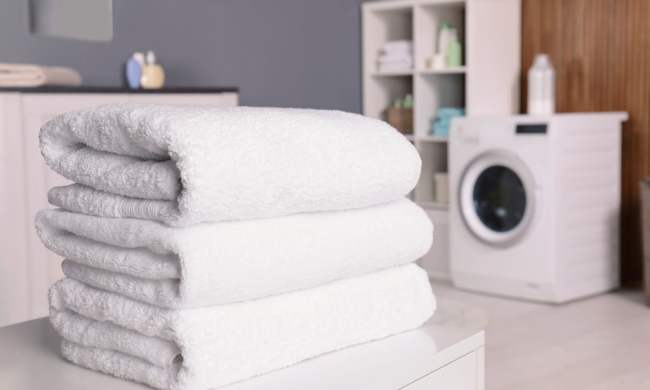
Being Disorganized Can Affect Your Health and Quality of Life
A number of studies have examined the effects of a cluttered home environment on physical and mental health. Researchers have found that clutter increases levels of the stress hormone cortisol. Clutter can also affect memory, ability to focus, digestion, immune response, sleep quality, eating habits, weight, relationships with others, and overall satisfaction with life.
A bathroom that’s cluttered is difficult to clean. In a disorganized and damp environment, mold, mildew, dust, and other allergens can grow and build up. Those contaminants can affect your family’s physical health.
According to Crystal G., a front desk employee at Advanced Allergy in New York City, “If a patient already has an allergy to dust and mold, having an unhygienic bathroom can exacerbate the issue. They can have a worse reaction to it as opposed to if they encounter it organically.” She added, “… people tend to have a more severe reaction to mold than to dust. Mold can affect the respiratory system worse than dust would.”
 Cleaning up Your Bathroom Can Improve Your Health
Cleaning up Your Bathroom Can Improve Your Health
Eliminating clutter, cleaning, and organizing your bathroom (and keeping it that way) can make you healthier, both mentally and physically. Being organized can reduce your daily stress level, and keeping surfaces clean can reduce your risk of getting sick. The idea of reorganizing your bathroom may seem overwhelming, but it doesn’t have to be.
Figure out What You Really Need
Ben Soreff, a partner at House to Home Organizing, in Norwalk, CT, said the most common problems he and his team see in bathrooms are clutter and people not making decisions. “Typically, a bathroom has a great deal of outdated medicine” as well as excess supplies, because people can’t find something they need and buy more, according to Soreff. He said a lot of people purchase bathroom items for a specific reason or event and then don’t use them again for years.
If you don’t use a product regularly, it may be a good idea to discard or donate it to free up space to store things you actually use. While you’re sifting through products in your bathroom, check expiration dates and discard items as necessary.
 Organize Important Supplies
Organize Important Supplies
Once you have eliminated clutter and whittled down the contents of your bathroom, you can set about organizing them. To do that, think about your daily routines and devise an organizational system that works for you and your family.
Keep Things You Use Often Easily Accessible
Products that you use on a regular basis should be within reach so you won’t have to search for them. Those that you use less often can be kept somewhere else.
Julie Brooks, a certified professional organizer (CPO) and owner of Peaceful Place Home Organizers in Massachusetts, said, “A lot of bathrooms don’t have a lot of storage space. People should not use them as storage space; they should use them as active space.” She noted, “People store too many things on counters that they don’t use frequently.”
According to Jan Baltrush, owner of Find Your Stuff in Waterbury, CT, “Only the stuff that you use every single day,” such as a toothbrush, toothpaste, etc., should be kept on the bathroom counter.
Only Keep Essentials in the Shower
Often, individuals and families have multiple bottles of shampoo, conditioner, and bodywash in the shower. If the shower is cluttered, items can fall off and get soap scum, and cleaning can be difficult. “I recommend keeping as little as possible in the shower,” Brooks said.
People tend to buy large bottles of shampoo and conditioner, but “shower storage is not designed to accommodate large containers,” according to Brooks. She recommends that homeowners buy small, decorative containers and decant shampoo and conditioner into them to avoid taking up too much space in the shower.
If your shower or bathtub doesn’t have a built-in shelf, you may want to buy a caddy to hold bottles of shampoo, conditioner, and bodywash. Just be sure that you choose one that’s sturdy so you won’t have to worry about things falling down while you’re bathing.
Organize Drawers, Cabinets, and Closets
A common problem, Soreff noted, is that people tend to clean up, rather than organize. They “throw things in a drawer” so they can wipe down the counter, rather than taking everything out to organize it, he said.
According to Soreff, “There tends not to be a lot of structure” in bathrooms. Using structure allows people to quickly see what they have and what they need.
“The vanities are the worst,” Baltrush said. “Under the sink is like a big, dark hole.” She said people often just throw things in there, from cleaning products to shampoo and soap.
Extra toothpaste, soap, and other everyday items can be stored in drawers, a cabinet under the sink, or the medicine cabinet so they’ll be out of sight but still within easy reach. Arrange them neatly to utilize the available space in the most efficient way possible. “What I try to do with my clients is get them to put things in baskets or drawers so they can pull them out and see what is in back,” Baltrush said.
Clear containers can be useful if you want to be able to quickly see what’s inside. Transferring items to jars and other containers can take up less space than keeping products in their original packaging. If you need to store something that could spill, put it in a plastic container that’s lined on the bottom to avoid a mess.
“If there is a linen closet in the bathroom, it’s usually really deep and tall,” Baltrush said. Many people don’t know what is on the top shelf or in the back because it’s difficult to see in those places. Baltrush recommends that people organize closets by categories and use baskets or containers to group items. Containers don’t have to be expensive. “I like heavy-duty plastic so they can be cleaned out if something spills,” she said.
Don’t Overlook Areas That Could Be Used for Bathroom Storage
Take advantage of space on the inside of your bathroom and vanity doors. Those areas are prime real estate for storage, but they’re often overlooked. Brooks also noted, “People do not use wall space for putting shelves or cabinets. They just leave wall space blank.”
Consider Storage Options outside the Bathroom
Many homeowners try to store too many things in the bathroom. According to Brooks, people tend to buy extra shampoo, soap, etc., then try to store those products in the limited space below the sink. “If they don’t have room for backstock in the bathroom, it needs to go somewhere else in the house, preferably on the same floor, like in a linen closet.” If you store items in a closet, put them in clear containers or baskets with labels so they’ll be easy to find when you need them.
Soreff noted, “Things we use frequently should live [in the bathroom]. Medical things should really live more remotely.” For example, a first aid kit can be stored in a closet outside the bathroom.
Sometimes there is simply no room to store products in a bathroom. “In modern bathrooms, there tends to be no vanity – just a standalone sink,” Soreff said. “A lot of bathrooms have no storage or structure. We typically set up supplies in the linen closet.”
Devise an Organizational System for a Shared Bathroom
If multiple people share a bathroom and there isn’t a clear system to keep things organized, items can get mixed together and misplaced. That can lead to chaos and conflict. An easy solution is to assign a storage space to each individual.
Baltrush recommends designating an area on a shelf or in a drawer for each individual. Brooks suggests getting an attractive tray for each person who uses the bathroom or, if there is a drawer, assigning each person a container that can be stored in that drawer. Another option that Brooks recommends is one that’s popular with college students living in dorms: people can store their shower items in a caddy in their bedroom and bring them into the bathroom when needed.
Soreff prefers to divide things by category, not by individual family member. He pointed out that many items, such as toothpaste, can be shared. If family members use different products, however, it may make sense to store them in clear bins, drawers, or shower caddies.
Organizing Your Bathroom Can Improve Your Physical and Mental Health
Having an organized bathroom will help you avoid wasting time searching for things and will spare you a good deal of frustration and stress. Keeping your bathroom organized can also help you cut down on the amount of time you spend cleaning and avoid problems such as mold.
Think about your family’s daily routines and arrange the products you use in a way that works for you. Once you have devised a system that works, maintenance is critical. Baltrush advises clients to go through their closet and vanity at least once a year to see what’s in there, clean it out, put things they use regularly up front, and get rid of other items that are just taking up space.
It can be easy to fall back into old patterns, shove things in drawers haphazardly, or leave them sitting out on the counter. Resist the temptation and focus on putting everything in its place. It may take time to develop new habits, but you can be rewarded with less stress, better health, and more free time.
 Cleaning up Your Bathroom Can Improve Your Health
Cleaning up Your Bathroom Can Improve Your Health Organize Important Supplies
Organize Important Supplies


